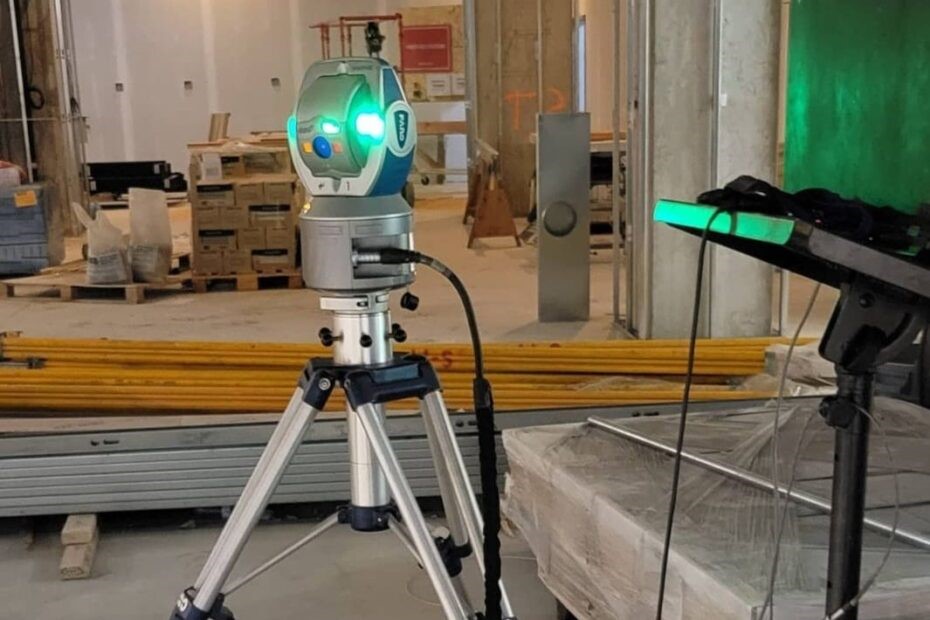If you’re working on a massive wind turbine assembly or aligning a giant airplane wing, how you get the measurements right? Traditional measurement tools like tape measures and levels simply won’t cut it for these large-scale projects. This is where laser tracker metrology comes in!
Laser tracker metrology uses a sophisticated laser beam and specialized equipment to capture incredibly precise 3D measurements. Unlike traditional methods that require physical contact, laser trackers work by bouncing a laser beam off a reflective target attached to the object being measured. The tracker then measures the angle and distance of the reflected beam, allowing for highly accurate calculations of the target’s position in space.
What Makes Laser Tracker Metrology Special?
One of the main advantages of laser tracker metrology is its sheer precision. These systems can measure distances with incredible accuracy, down to a fraction of a millimeter over large areas. This makes them ideal for tasks requiring extreme accuracy, such as aligning large machinery or inspecting critical components for aerospace applications.
Laser Tracker Metrology: How Does It Work?
Here’s a deeper dive into how laser tracker metrology works:
- The Laser Beam: A laser beam is emitted from the tracker and directed towards a special reflective target attached to the object being measured.
- Reflection and Measurement: The laser beam bounces off the target and returns to the tracker. The tracker measures the time it takes for the beam to travel and the angle of its return.
- Data Processing: Sophisticated software analyzes the travel time and angle data to calculate the target’s precise 3D coordinates relative to the tracker’s position.
- 3D Measurement Freedom: Unlike fixed-position measuring tools, laser trackers offer a wide range of movement. They can rotate horizontally and vertically, allowing for measurements from various angles. This makes them perfect for capturing complex shapes and large objects.
Beyond Precision: Benefits of Laser Tracker Metrology
The benefits of laser tracker metrology extend beyond just high precision:
- Versatility: Laser trackers can be used for a wide range of applications, from large-scale construction projects to intricate machine tool calibration.
- Portability: Despite their advanced technology, laser trackers are surprisingly portable. They can be easily transported to different work sites, making them ideal for on-location measurements.
- Efficiency: Compared to traditional methods, laser tracking can significantly speed up the measurement process, saving time and resources on projects.
- Improved Quality Control: Laser tracker metrology’s accuracy helps ensure precise alignment and component placement, leading to improved quality control in manufacturing and construction.
The Bottom Line
Laser tracker metrology is a powerful tool for capturing highly accurate 3D measurements across various industries. If you need a solution for precise measurement of large objects or complex shapes, laser tracking might be the perfect answer. Companies like Frontier Metrology offer comprehensive laser tracker services, from equipment rentals and on-site operation to data processing and analysis. We have a team of experienced professionals who can help you determine if laser trackers are the right fit for your project and ensure you get the most accurate measurements possible.
